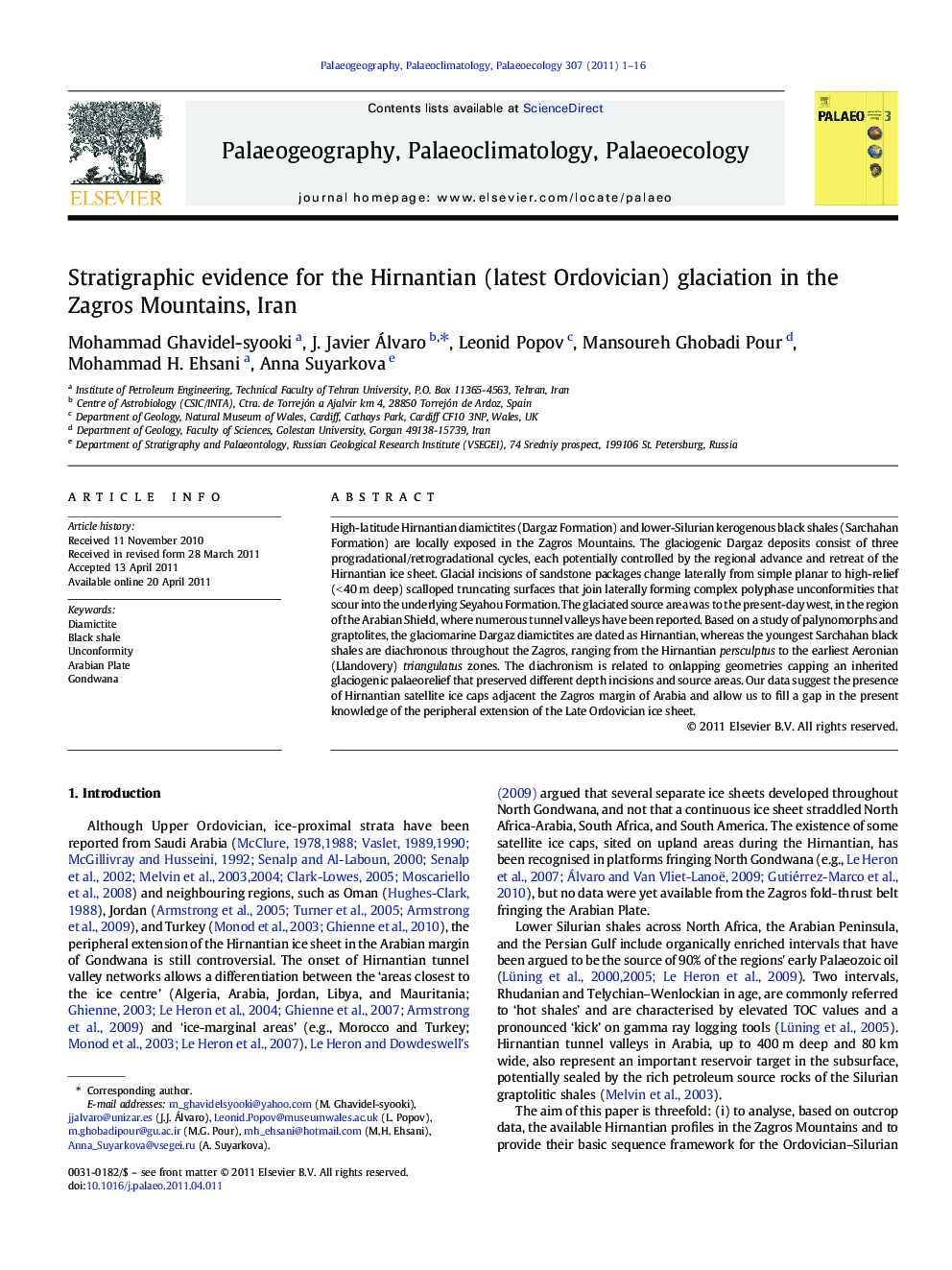| Article ID | Journal | Published Year | Pages | File Type |
|---|---|---|---|---|
| 4467287 | Palaeogeography, Palaeoclimatology, Palaeoecology | 2011 | 16 Pages |
High-latitude Hirnantian diamictites (Dargaz Formation) and lower-Silurian kerogenous black shales (Sarchahan Formation) are locally exposed in the Zagros Mountains. The glaciogenic Dargaz deposits consist of three progradational/retrogradational cycles, each potentially controlled by the regional advance and retreat of the Hirnantian ice sheet. Glacial incisions of sandstone packages change laterally from simple planar to high-relief (< 40 m deep) scalloped truncating surfaces that join laterally forming complex polyphase unconformities that scour into the underlying Seyahou Formation. The glaciated source area was to the present-day west, in the region of the Arabian Shield, where numerous tunnel valleys have been reported. Based on a study of palynomorphs and graptolites, the glaciomarine Dargaz diamictites are dated as Hirnantian, whereas the youngest Sarchahan black shales are diachronous throughout the Zagros, ranging from the Hirnantian persculptus to the earliest Aeronian (Llandovery) triangulatus zones. The diachronism is related to onlapping geometries capping an inherited glaciogenic palaeorelief that preserved different depth incisions and source areas. Our data suggest the presence of Hirnantian satellite ice caps adjacent the Zagros margin of Arabia and allow us to fill a gap in the present knowledge of the peripheral extension of the Late Ordovician ice sheet.
► Analysis of the high-latitude Hirnantian diamictites (Dargaz Formation) and lower-Silurian kerogenous black shales (Sarchahan Formation) of the Zagros Mountains. ► The glaciogenic Dargaz deposits represent three pulses of advance and retreat of the Hirnantian ice sheet. ► Glaciated source area was in the western Arabian Shield. ► The overlying Sarchahan black shales are diachronous and range from the Hirnantian persculptus to the earliest Aeronian (Llandovery) triangulatus zones. ► These deposits point to the presence of Hirnantian satellite ice caps close to the Zagros margin of Arabia.
